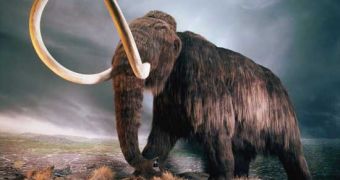According to new research, woolly mammoths were quite fond of wildflowers, and not in the sense that they liked putting them in their fur to make themselves look prettier. On the contrary, they enjoyed eating them, and relied on them as a valuable source of protein.
What's more, scientists say that, all things considered, it is possible that this sweet tooth that woolly mammoths had for wildflowers led to their demise.
This is because, once these plants disappeared as a result of changes in environmental conditions, the oversized vegans were left without an important source of nutrients.
According to NPR, specialist Eske Willerslev with the University of Copenhagen and his fellow researchers discovered that woolly mammoths consumed significant amount of flowers with the help of hundreds of samples of both frozen arctic soil and mammoth poop.
From these samples, which were collected from present-day Alaska and Siberia, the scientists extracted ancient DNA, the same source details.
Later, the DNA was analyzed and information obtained in this manner helped the researchers get an idea of the flora that the mammoth's natural habitats accommodated for at the time when these giants roamed the Earth.
It was thus discovered that, contrary to popular opinion, today’s Arctic tundra was not home to grassland alone during the time when woolly mammoths lived. Thus, little plants known as forbs also grew in the region.
By the looks of it, these plants had fairly small flowers that looked similar to dandelions or buttercups. It is these flowers that Eske Willerslev and his colleagues say the mammoths used to eat in order to make the most of the proteins they contained.
“To our surprise it turned out that the dominate source food that these animals were eating were in fact the flowering plants and not so much the grasses that everyone thought was so important,” researcher Eske Willerslev explains.
The scientists who carried out this investigation say that, given the fact that they ate so many such flowers, woolly mammoths must have been dependent on them for survival.
Consequently, when this source of proteins disappeared about 25,000 years ago in the aftermath of the last ice age, so did the mammoths. As Eske Willerslev puts it, “The vegetation change might have most likely been pretty devastating.”

 14 DAY TRIAL //
14 DAY TRIAL //